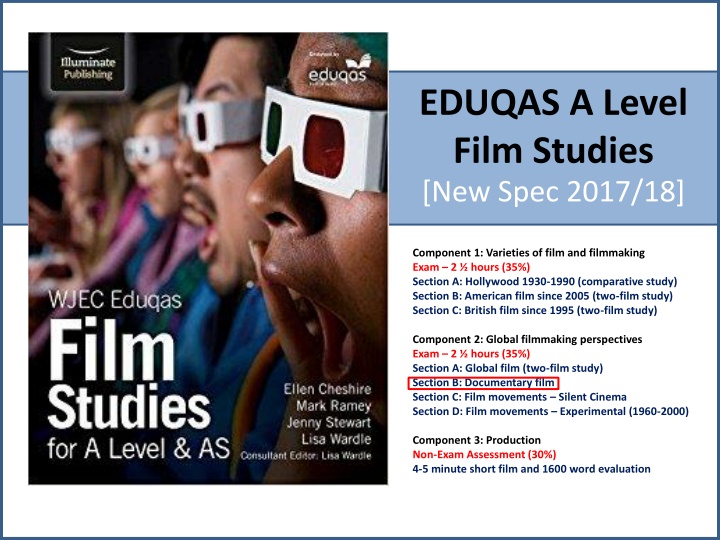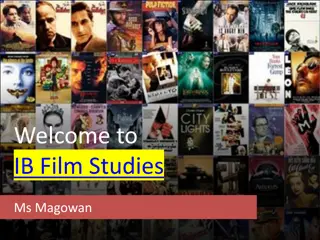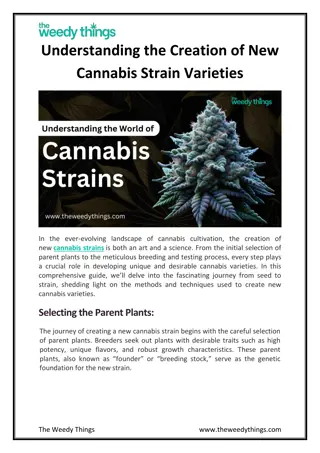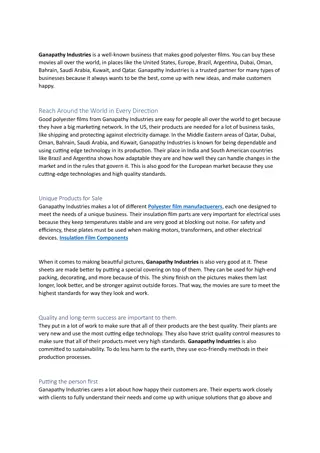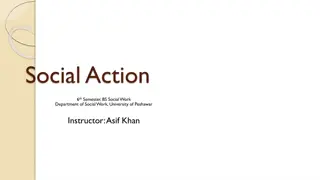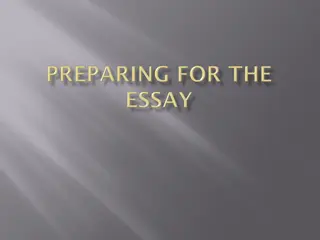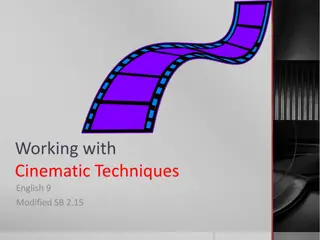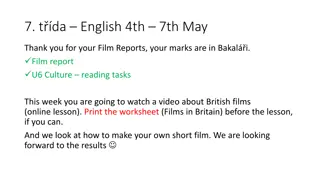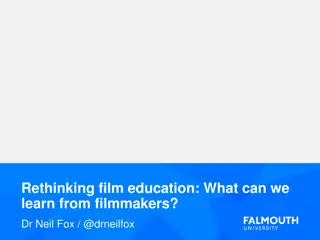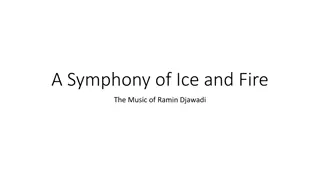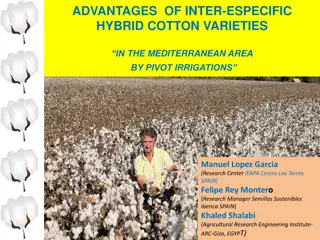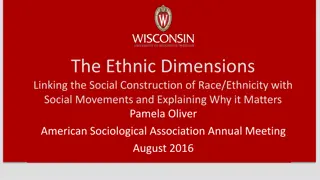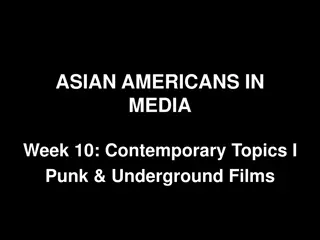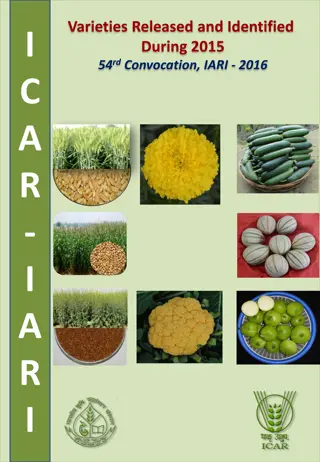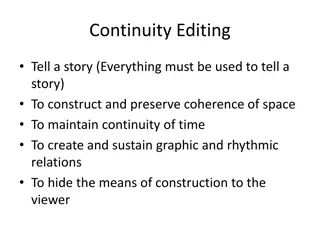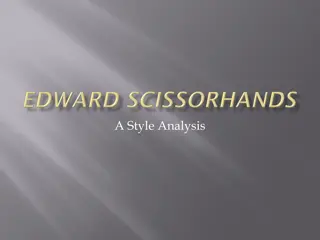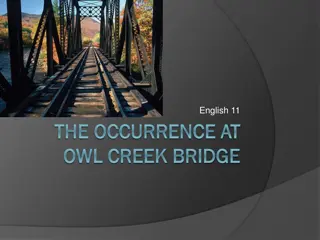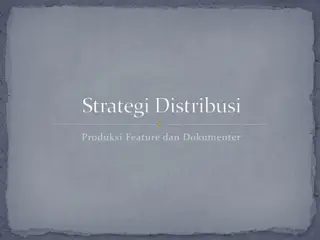Exploring Varieties of Film and Filmmaking Across Different Cinematic Movements
Delve into the diverse world of film and filmmaking through a comprehensive examination of Hollywood from 1930 to 1990, American film since 2005, British film since 1995, global cinema perspectives, documentary filmmaking, silent cinema, and experimental film movements of the 1960s to 2000s. Discover iconic films from different regions, genres, and time periods, analyzing themes, techniques, and cultural influences that shape these cinematic narratives.
Download Presentation

Please find below an Image/Link to download the presentation.
The content on the website is provided AS IS for your information and personal use only. It may not be sold, licensed, or shared on other websites without obtaining consent from the author.If you encounter any issues during the download, it is possible that the publisher has removed the file from their server.
You are allowed to download the files provided on this website for personal or commercial use, subject to the condition that they are used lawfully. All files are the property of their respective owners.
The content on the website is provided AS IS for your information and personal use only. It may not be sold, licensed, or shared on other websites without obtaining consent from the author.
E N D
Presentation Transcript
EDUQAS A Level Film Studies [New Spec 2017/18] Component 1: Varieties of film and filmmaking Exam 2 hours (35%) Section A: Hollywood 1930-1990 (comparative study) Section B: American film since 2005 (two-film study) Section C: British film since 1995 (two-film study) Component 2: Global filmmaking perspectives Exam 2 hours (35%) Section A: Global film (two-film study) Section B: Documentary film Section C: Film movements Silent Cinema Section D: Film movements Experimental (1960-2000) Component 3: Production Non-Exam Assessment (30%) 4-5 minute short film and 1600 word evaluation
Stories We Tell: Subjectivities of Representation
Component 1: Varieties of film and filmmaking - Exam 2 hours 35% Component 2: Global filmmaking perspectives - Exam 2 hours 35% Section A: Hollywood 1930-1990 (comparative study) Group 1: Classical Hollywood 1930-1960) - Casablanca (Curtiz, 1942, U) - The Lady from Shanghai (Welles, 1947, PG) - Johnny Guitar (Ray, 1954, PG) - Vertigo (Hitchcock, 1958, PG) - Some Like It Hot (Wilder, 1959, 12) Section A: Global film (two-film study) Group 1: European Film - Life is Beautiful (Benigni, Italy, 1997, PG) - Pan s Labyrinth (Del Toro, Spain, 2006, 15) - Diving Bell (Schnabel, France 2007, 12) - Ida (Pawlikowski, Poland, 2013, 15) - Mustang (Erguven, Turkey, 2015, 15) - Victoria (Schipper, Germany, 2015, 15) Group 2: New Hollywood (1961-1990) - Bonnie and Clyde (Penn, 1967, 15) - OFOTCN (Forman, 1975, 15) - Apocalypse Now (Coppola, 1979, 15) - Blade Runner (Scott, 1982, 15) - Do The Right Thing (Lee, 1989, 15) Group 2: Outside Europe - Dil Se (Ratnam, India, 1998, 12) - City of God (Meirelles, Brazil, 2002) - House of Flying Daggers (Zhang, China, 2004, 15) - Timbuktu (Sissako, Mauritania, 2014, 12A) - Wild Tales (Szifron, Argentina, 2014, 15) - Taxi Tehran (Panahi, Iran, 2015, 12) Section B: American film since 2005 (two-film study) Group 1: Mainstream Film - No Country For Old Men (Coen, 2007, 15) - Inception (Nolan, 2010, 12A) - Selma (Duvernay, 2014, 12A) - Carol (Haynes, 2015, 15) - La La Land (Chazelle, 2016) Section B: Documentary film - Sisters in Law (Ayisi, Cameroon, 20015, 12A) - The Arbor (Barnard, UK, 2010, 15) - Stories We Tell (Polley, Canada, 2012, 12A) - 20,000 Days on Earth (Pollard, UK, 2014, 15) - Amy (Kapadia, UK, 2015, 15) Section C: Film movements Silent Cinema - Keaton compilation (Keaton, 1922, US) - Strike (Eisenstein, USSR, 1924, 15) - Sunrise (Murnau, US, 1927, U) - Spies (Lang, Germany, 1928, PG) - Man With a Movie Camera (Vertov, 1928) - A Propos de Nice (Vigo, France, 1930, U) Group 2: Contemporary independent film - Winter s Bone (Granik, 2010, 15) - Frances Ha! (Baumbach, 2012, 15) - Beasts of the Southern Wild (Zeitlin, 2012, 12A) - Boyhood (Linklater, 2015, 15) - Captain Fantastic (Ross, 2015, 15) Section C: British film since 1995 (two-film study) - Secrets and Lies (Leigh, 1996, 15) - Trainspotting (Boyle, 1996, 18) - Sweet Sixteen (Loach, 2002, 18) - Shaun of the Dead (Wright, 2004, 15) - This is England (Meadows, 2006, 18) - Moon (Jones, 2009, 15) - Fish Tank (Arnold, 2009, 15) - We Need To Talk About Kevin (Ramsay, 2011, 15) - Sightseers (Wheatley, 2012, 15) - Under the Skin (Glazer, 2013, 15) Section D: Film movements Experimental Film (1960-2000) - Vivre sa vie (Godard, France, 1962, 15) - Daisies (Chytilova, Czech, 1965) - Saute ma ville (Akerman, Belgium, 1968) - Pulp Fiction (Tarantino, US, 1994, 18) - Fallen Angels (Wong, Hong Kong, 1995, 15) - Timecode (Figgis, US, 2000, 15)
Three documentary elements 1 Talking heads Conventional footage consisting of static camera interview set-ups 2 Shaky Super 8 footage Fictional home movies 3 Meta-narrative An exploration of the artifice of the filmmaking process
Michael Polley (Himself/Peter Evans) Sarah Polley (Herself) Diane Polley John Buchan Susy Buchan (Herself/Lani Billard) (Herself/Rebecca Jenkins) (Himself/Justin Goodhand) Sarah is both director and daughter in this documentary. She features as an 8-year old girl in reconstructed footage and is included in interview scenes with her family members. She takes on an investigative approach so they al face unresolved mysteries of the past. Sarah s charismatic late mother Diane is the initial focal point of the story. There is a mystery surrounding an affair that could mean Michael is not Sarah s biological father. She was the life and soul of the family unit: the glue which held everyone together. Memories are bittersweet. Michael raised Sarah as her daughter and has bittersweet memories of his late wife Diane who may have had an affair which may mean that Sarah is not his biological daughter. The dilemma over nature and nurture underpins the story. KEY CHARACTERS IN STORIES WE TELL SIGNIFICANCE OF FAUX FOOTAGE Other Key Characters Cathy Gulkin Marie Murphy Robert MacMillan Anne Tait Deidre Bowen Victoria Mitchell Mort Ransen Geoffrey Bowes Tom Butler Pixie Bigelow Claire Walker Wayne Robson Mark Polley (Himself/Seamus Morrison) Joanna Polley (Herself/Allie MacDonald) Harry Gulkin (Himself/Alex Hatz) Mark is an intelligent and witty brother to Sarah. Sarah s sister.
Opening Sequence: Voiceover narration from Michael Polley When you're in the middle of a story, it isn't a story at all but rather a confusion, a dark roaring, a blindness, a wreckage of shattered glass and splintered wood, like a house in a whirlwind or else a boat crushed by the icebergs or swept over the rapids, and all aboard are powerless to stop it. It's only afterwards that it becomes anything like a story at all, when you're telling it to yourself or someone else. - passage from Alias Grace by Margaret Atwood
Key discussion points on the nature of story Stories We Tell is a story about the nature of storytelling Catalyst of the narrative: Diane Polley sinfidelity and Sarah s biological father. Which is the dominant narrative in the story? Who is the arbiter of any given story? Why are some stories given a greater platform than others? Why do we rate the quality of each story told? How do we construct our own truths ? (Realism vs. Artifice) In this film, which is more significant to the director Sarah Polley, nature or nurture? Is this film more about Diane Polley or Michael Polley? The personas of Sarah Polley: the director, the actress, the daughter. Research: what is Werner Herzog s poetic truth ?
Art of the meta-narrative Equipment in shot (acentral imaging) Breaking the fourth wall interviews Intertext final shot of Wexler s Medium Cool
Are filmed family memories in fact fake and reconstructed Super 8 footage?
Emerging female directors Female authorship: Longinotto able to speak nearby her subjects rather than about them (respect for subjects, providing a voice, creating intimacy, exploring ideas of truth- poetic, subjective)
Formalist analysis The unnatural right-to-left pan revealing Faux footage the credits reveal actors playing the roles of the Polley family, home movie style is voyeuristic (invasive close-ups are not typical of home videos),
Contentions Are personal documentaries too self- indulgent?
Documentary Theory John Grierson
Aufderheide, P. (2008) Documentary Film: A Very Short Introduction (Oxford University Press: Oxford) Kahana, J. ed. (2016) The Documentary Film Reader: History, Theory, Criticism, (Oxford University Press: Oxford) Winston, B.; Vanstone, G.; Chi, w. (2017) The Act of Documenting: Documentary Film in the 21st Century, (Bloomsbury Publishing Inc.: London) Nichols, B. (2017) Introduction to Documentary, Third Edition, (Indiana University Press: Bloomington, USA) Research Bibliography Smaill, B. (2016) The Documentary Film: Female Subjectivity and the Problem of Realism in Hole, K.L.; Jelaca, D.; Kaplan, E.A.; Petro, P. eds. The Routledge Companion to Cinema and Gender, (Routledge: London), pp. 174-183 Wilson, R.A. (2015) The Role of Oral History in Surviving a Eugenic Past in High, S. ed. Beyond Testimony and Trauma: Oral History in the Aftermath of Mass Violence, (UBC Pres: Vancouver, Canada), pp. 199-240 Hoffman, K.D. (2017) Deceiving into the Truth : The Indirect Cinema of Stories We Tell and The Act of Killing (Rowman & Littlefield Publishing Group Inc.: Lanham, USA), pp. 517-536 Anderst, L. (2013) Memory s Chorus: Stories We Tell and Sarah Polley s Theory of Autobiography, www.sensesofcinema.com/2013/feature-articles/memorys-chorus-stories-we-tell-and-sarah-polleys- theory-of-autobiography/ Nayman, A. Stories We Tell: Sarah Polley Tackles the Truth, www.documentary.org/magazine/tell-me- story-sarah-polley-tackles-truth Erickson, S. (2013) Sarah Polley on Secrets, Super 8, and Stories We Tell, www.studiodaily.com/2013/05/sarah-polley-on-secrets-super-8-and-stories-we-tell/ Mayer, S. (2014) Film of the Week: Stories We Tell, www.bfi.org.uk/news-opinion/sight-sound- magazine/reviews-recommendations/film-week-stories-we-tell
